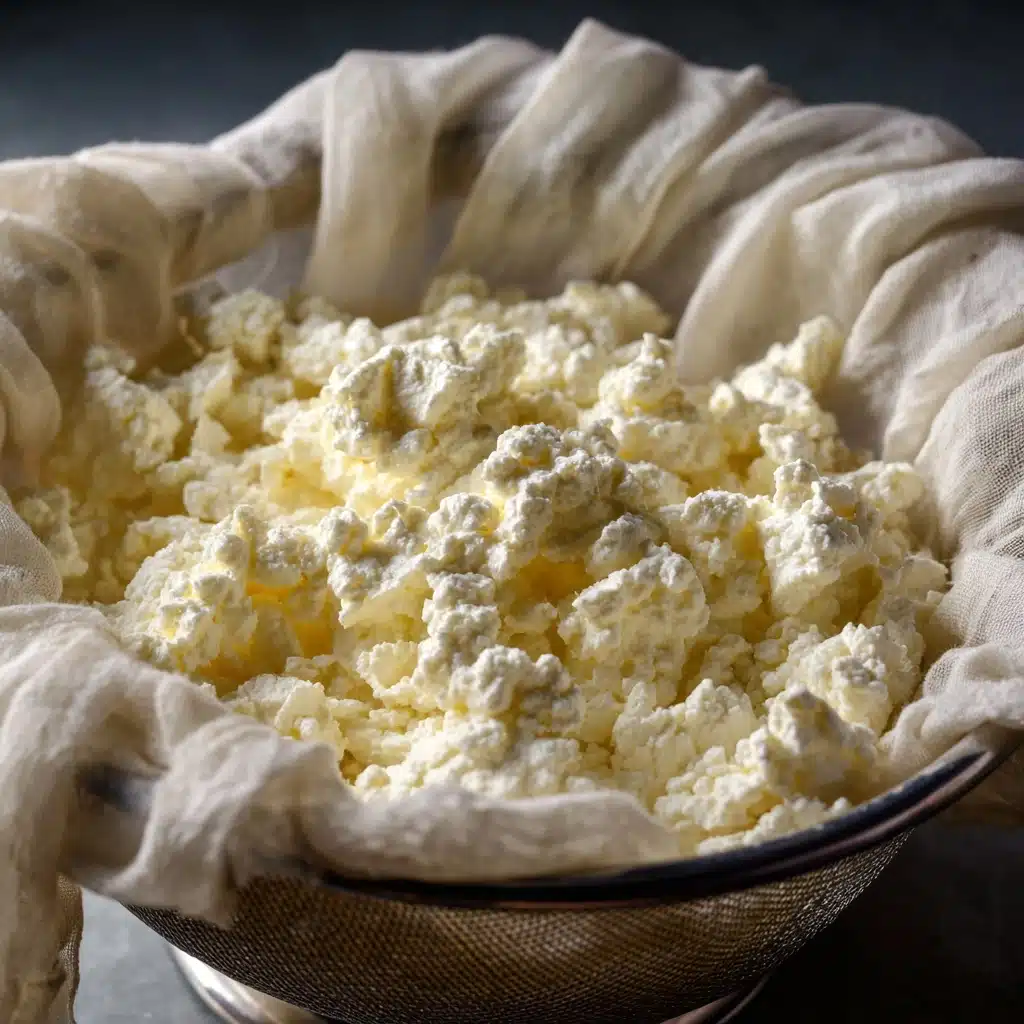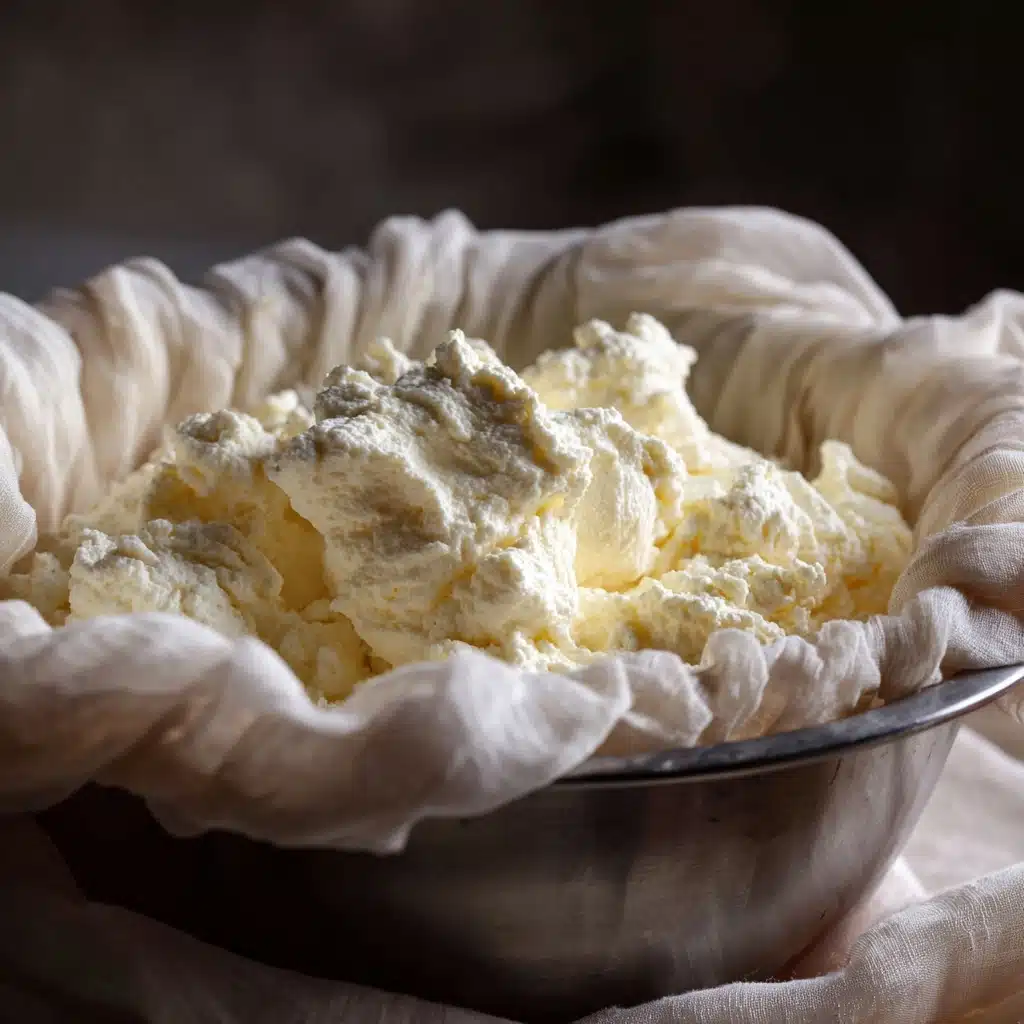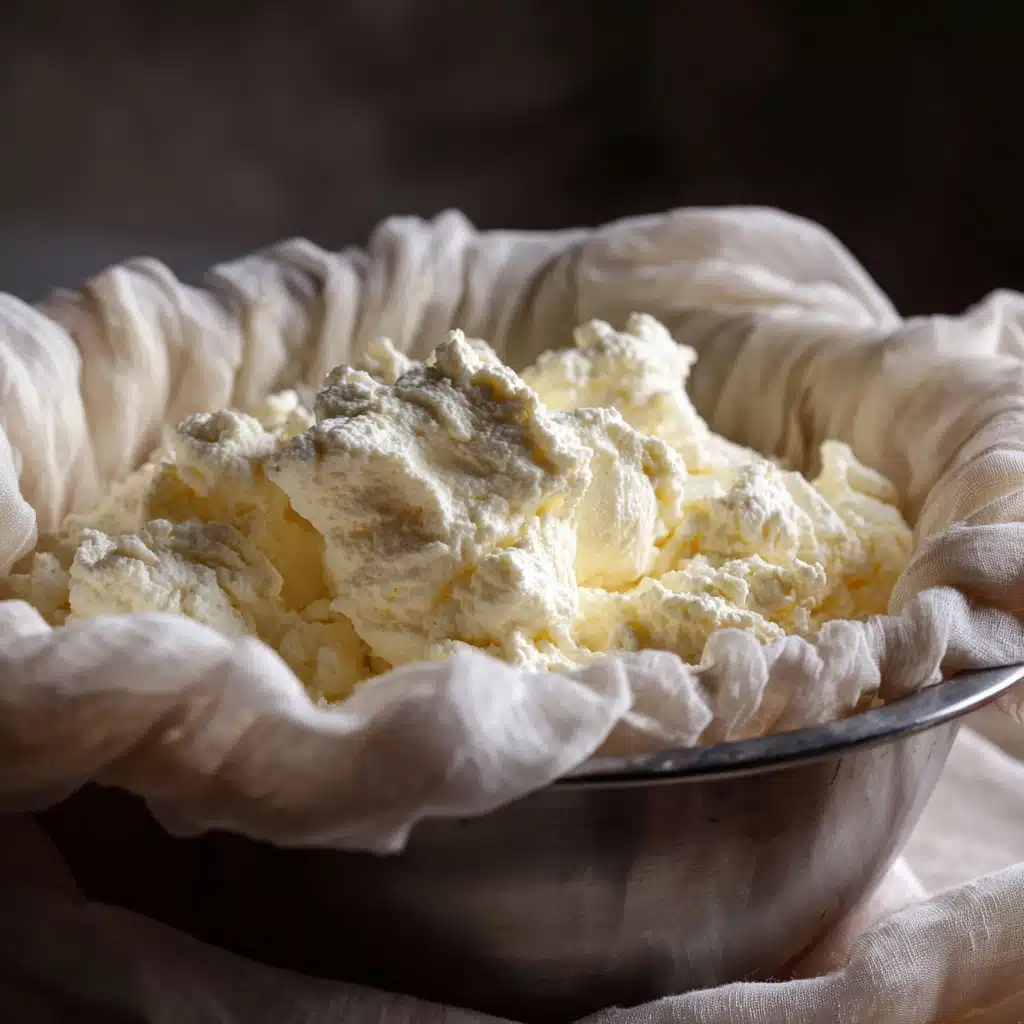Making homemade Farm Cheese is one of those kitchen joys that feels both magical and deeply satisfying. With just a handful of everyday ingredients and a bit of patience, you can create a deliciously creamy, fresh cheese right in your own home. Whether you want something to slather on a crusty piece of bread or a mild cheese to crumble over salads, Farm Cheese is endlessly versatile. Plus, the simple process results in amazing flavor and texture that store-bought varieties just can’t match.

Ingredients You’ll Need
The beauty of Farm Cheese lies in its straightforward ingredient list. Each one plays an essential role, so be sure to use the best quality you can find for top-notch results and flavor.
- Whole milk: Use at least a gallon of the highest quality whole milk you can find, ideally not ultra-pasteurized, for a luscious, creamy finish.
- White vinegar or lemon juice: Just 1/4 cup is needed to encourage the milk to curdle into silky, rich curds.
- Sea salt (optional): A teaspoon of sea salt heightens and balances the mild dairy flavor, but you can leave it out if you’d prefer an unseasoned cheese.
How to Make Farm Cheese
Step 1: Heat the Milk
Begin by pouring your whole milk into a large, heavy-bottomed pot. Set it over medium heat and give it an occasional gentle stir to keep it from scorching on the bottom. You’re aiming to gradually warm the milk until it reaches about 185°F (85°C), just shy of a simmer. Watch for small bubbles forming around the edge and a shimmering surface—it’s a sign your milk is ready for the next step.
Step 2: Add the Acid
Remove the pot from the heat and slowly pour in your vinegar or freshly squeezed lemon juice. Stir the milk gently, then let it stand undisturbed for 10 to 15 minutes. During this time, you’ll see the magical transformation as the milk separates into curds and whey. Resist the urge to stir—letting the mixture rest ensures bigger, softer curds.
Step 3: Strain the Curds
Line a colander with a clean cheesecloth or a fine mesh towel and set it over a large bowl to catch the draining whey. Gently ladle or pour the curds and whey into the lined colander. Once all the curds are in, gather up the corners of the cheesecloth and tie them together, forming a pouch. This helps the cheese drain and shape as it cools.
Step 4: Drain and Finish
Let the cheese pouch drain for 30 to 60 minutes, depending on your preferred consistency—less time for a softer, creamier Farm Cheese, or longer for a firmer, crumbly texture. Once drained to your liking, transfer the curds into a bowl, sprinkle with sea salt if you’d like, and stir gently to combine. Your homemade Farm Cheese is now ready to enjoy!
How to Serve Farm Cheese

Garnishes
The mild flavor of Farm Cheese is just waiting to be dressed up with fresh herbs like chives, dill, or parsley. A drizzle of olive oil, a sprinkle of cracked black pepper, or ribbons of lemon zest really take things to the next level. Feel free to get creative with your favorite toppings—a swirl of honey or a handful of pomegranate seeds make this cheese a stunning centerpiece for any cheese board.
Side Dishes
Farm Cheese pairs beautifully with ripe tomatoes, cucumbers, and olives for a simple, rustic salad. It’s also fantastic served alongside roasted vegetables or as a cooling counterpoint to spicy dishes. Try it stacked with grilled eggplant or spooned over warm grains like farro or quinoa for a nourishing, satisfying meal.
Creative Ways to Present
Think beyond the cheese plate: spread Farm Cheese on toast and top with smoked salmon or roasted peppers; stuff it into pierogi or ravioli for a delightful homemade filling; or swirl it into scrambles and fritattas. Even a dollop stirred into hot polenta or soups adds a silky richness you’ll love.
Make Ahead and Storage
Storing Leftovers
Your freshly made Farm Cheese will keep best in an airtight container in the refrigerator for up to a week. The flavor actually mellows and the texture sets beautifully after a day or two, making it ideal for meal prep or quick lunches throughout the week.
Freezing
While you technically can freeze Farm Cheese, be aware that the texture will change and become a bit crumbly. If you plan to freeze, wrap it tightly in plastic wrap and then place in a freezer bag. For best flavor and texture, use within a month and thaw it overnight in the fridge before using.
Reheating
Farm Cheese is at its best enjoyed cold or at room temperature, but if you need to warm it slightly, simply set it out for 20 minutes on the counter or gently microwave in short bursts, stirring in between to avoid overheating. Avoid direct, high heat as it can cause the curds to separate.
FAQs
Can I use low-fat or non-dairy milk to make Farm Cheese?
Whole milk gives the creamiest, richest Farm Cheese, but you can experiment with lower-fat options if you like, keeping in mind that the yield and texture will change. Non-dairy milks generally do not contain enough protein to properly curdle and set, so they won’t work for traditional Farm Cheese.
What can I do with the leftover whey?
Don’t toss that golden whey! It’s high in protein and can be used in smoothies, soups, bread dough, or even as a nourishing liquid for cooking grains. It adds a gentle tang and richness to recipes, and reduces kitchen waste at the same time.
How can I flavor Farm Cheese?
You can customize your Farm Cheese with all sorts of add-ins: try mixing in roasted garlic, sun-dried tomatoes, chopped nuts, or your favorite fresh herbs. For a hint of spice, add a pinch of chili flakes or toasted cumin seeds. The possibilities are endless, so have fun!
My curds are tiny or not fully forming. What went wrong?
This could be due to the type Cheese, Condiment. Ultra-pasteurized milk often doesn’t separate properly, so always try to use regular pasteurized or raw milk. Be sure to heat the milk to the right temperature as well; not hot enough, and the acid won’t be able to work its magic.
Is Farm Cheese the same as ricotta or paneer?
Farm Cheese is similar to both but is slightly different in texture and taste. Ricotta uses whey and is softer, while paneer is usually pressed until very firm. Farm Cheese falls somewhere in between—creamy, spreadable, and marvelous for so many dishes.
Final Thoughts
I can’t recommend homemade Farm Cheese enough—it’s so easy, and the flavor is truly special. Give it a try next time you want to add a little extra charm to your meals, and don’t be surprised if it becomes your new favorite kitchen ritual!
Print
Farm Cheese Recipe
- Total Time: 30 minutes plus draining time
- Yield: About 2 cups 1x
- Diet: Vegetarian, Gluten-Free
Description
Learn how to make your own farm cheese at home with just a few simple ingredients. This fresh and creamy cheese is perfect for spreading on toast, adding to salads, or using in various recipes. With this easy-to-follow recipe, you’ll have delicious farm cheese ready in no time.
Ingredients
Main Ingredients:
- 1 gallon whole milk (preferably not ultra-pasteurized)
- 1/4 cup white vinegar or lemon juice
- 1 teaspoon sea salt (optional)
Instructions
- Heat the Milk: Pour the milk into a large heavy-bottomed pot and heat over medium heat until it reaches about 185°F (85°C), just before boiling.
- Add Acid: Remove the pot from the heat and slowly stir in the vinegar or lemon juice. Let the milk sit undisturbed for 10–15 minutes to form curds.
- Strain the Curds: Line a colander with cheesecloth, pour the curds and whey into it, then tie up the cloth and let the cheese drain for 30–60 minutes.
- Season and Store: Transfer the cheese to a bowl, stir in salt if desired, and store in the fridge for up to a week.
Notes
- Farm cheese is versatile and can be customized with herbs, spices, or other flavorings.
- Use this cheese in various dishes like pierogi, salads, or simply enjoy it on its own.
- Prep Time: 10 minutes
- Cook Time: 20 minutes
- Category: Cheese, Condiment
- Method: Stovetop
- Cuisine: Eastern European, American
Nutrition
- Serving Size: 1/4 cup
- Calories: 100
- Sugar: 2g
- Sodium: 90mg
- Fat: 5g
- Saturated Fat: 3g
- Unsaturated Fat: 2g
- Trans Fat: 0g
- Carbohydrates: 3g
- Fiber: 0g
- Protein: 7g
- Cholesterol: 20mg







